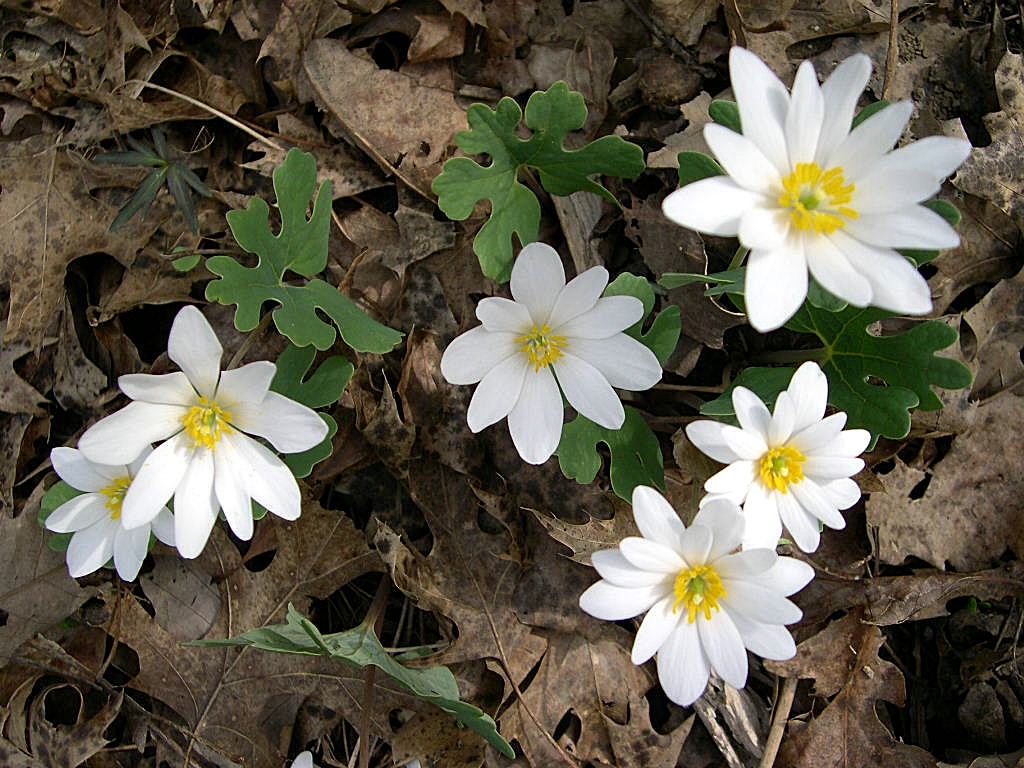
Also known as Canada puccoon, bloodwort, redroot, red puccoon, Indian paint, and black paste bloodroot is a member of the poppy family, Papaveraceae, that also includes bleeding heart and corydalis. It is an early spring ephemeral native to deciduous woods from Nova Scotia to Florida and west to the Great Lakes. The plant grows 12-14″ tall from branching, orange rhizomes and has blue-gray, basal leaves that are saucer-shaped, 3-5″ across, and have palmate-reticulate venation. The leaves have undulating margins and are deeply lobed with 5-9 major lobes and several smaller ones. The flowers and leaves come up on separate stems with the leaf completely enveloping the flower bud, the bud often opening before the leaf unfurls. The flowers are 1.5-3″ across and have 8-16 white petals and numerous bright gold stamens. Each flower blooms only for a day or two and only when the sun is out. The fruit is an elongated capsule up to 2″ long and containing 20-30 round, red to black seed that are dispersed by ants when ripe. The roots, stems, and leaves produce a red juice that was used by native Americans as a dye and insect repellent The plant produces stolons and can quickly form a dense stand which can serve as an attractive ground cover. In the dry periods of mid summer the plant may yellow and go dormant if not mulched. The genus name, Sanguinaria, comes from the Latin word sanguineus, meaning bloody, and refers to the red juice of the root and stem. The specific specific epithet, canadensis, is a Latinized form of Canada, and refers to a geographic area where the plant is native.
Type: Herbaceous perennial
Bloom: Clear white flowers with conspicuous golden stamens are borne singly on red stems in early spring.
Foliage: Large, saucer-shaped deeply lobed leaves
Size: 12-14” H x 9-12” W
Light: Shade
Soil: Humus-rich, moist, semi-acidic to neutral.
Fertilizer: Mulch with compost
Hardiness: Zones 5-9
Care: Mulch with deciduous leaves in winter
Pests and Diseases: None of significance
Propagation: Seed (sow immediately after ripening to avoid drying out); division (wear gloves because rhizomes are poisonous).
Companion plants: For deep shade, Canadian violet (Viola canadensis, squirrel corn (Dicentra canadensis), wild ginger (Asarum canadense), goldenseal (Hydrastis canadensis); for light shade, columbine (Aquilegia Canadensis), hosta, primroses.
Outstanding Selection: ‘Flore Pleno’ / ‘Multiplex’ (double petals)
Photo Credit: Jay_Sturner Wikimedia Commons
